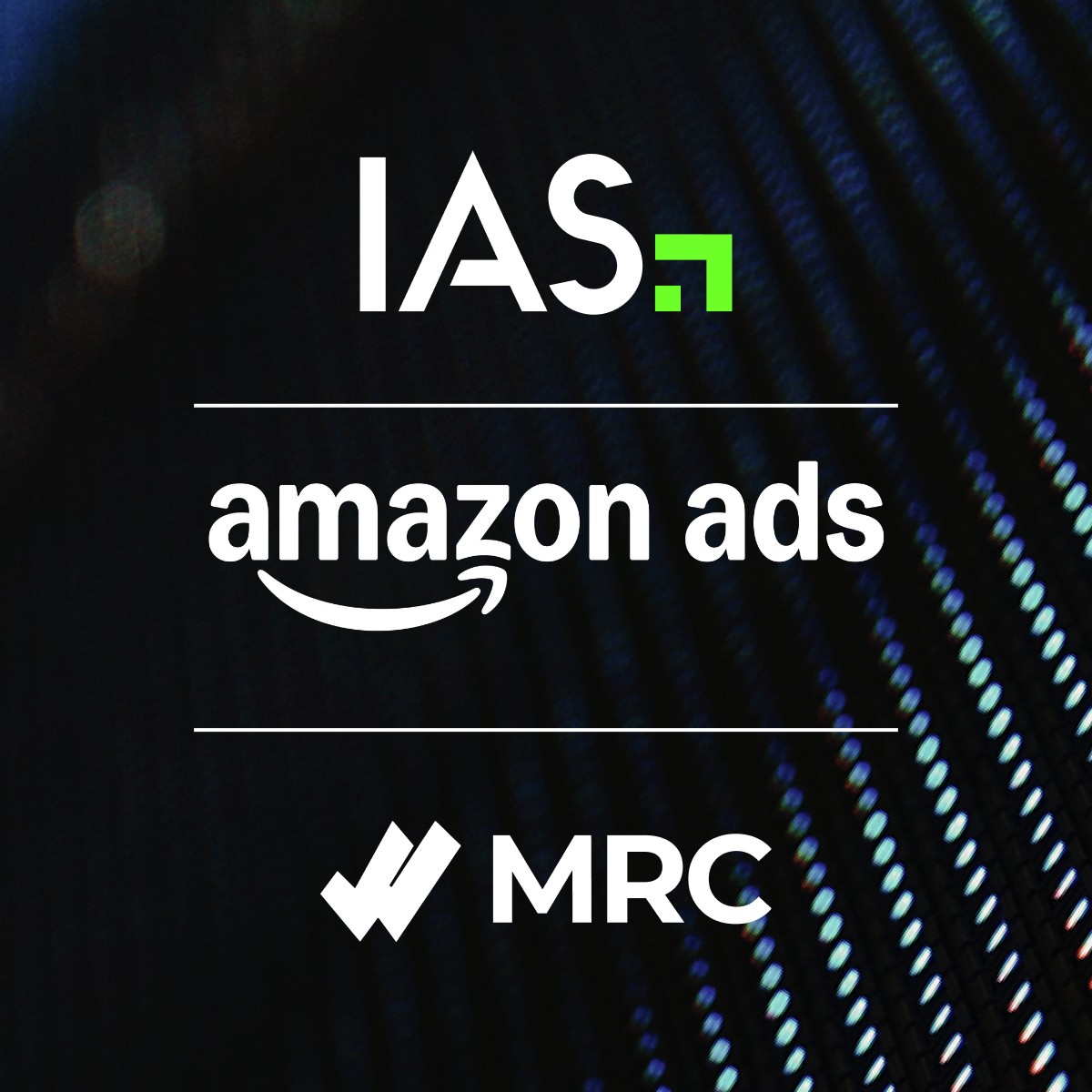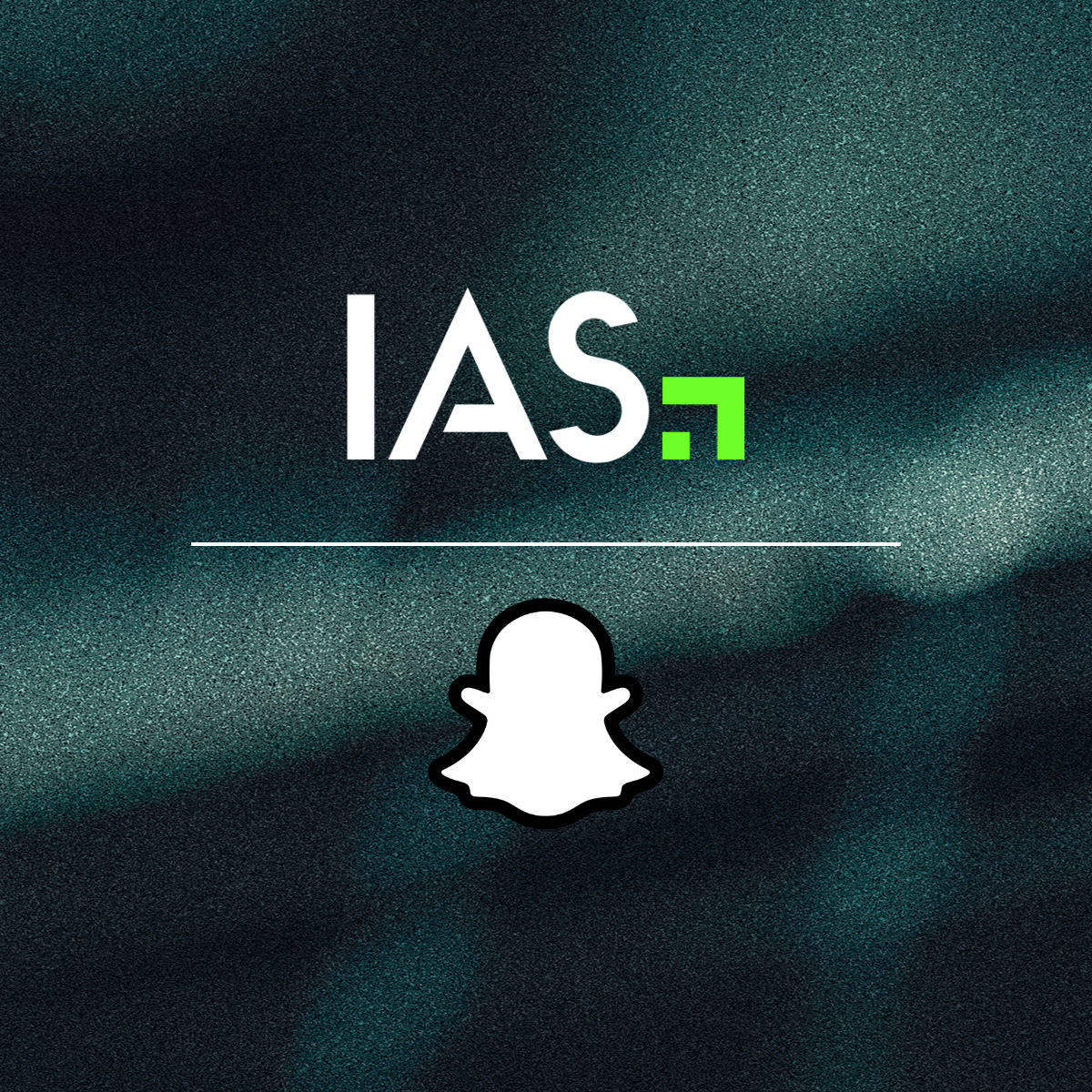The IAS Election Lab explored contextual targeting across seven key swing states — Arizona, Georgia, Michigan, Nevada, North Carolina, Pennsylvania, and Wisconsin — to pinpoint the top-performing segments based on volume, media quality, and campaign results. By examining data from the week of June’s presidential debate, we reveal how political advertisers can scale their efforts across the open web by targeting high-performing, non-political content to supplement targeting alongside news and other political content.
While placing ads on high quality news sites increases ad engagement and favorability, targeting non-political content can provide additional benefits too. In this analysis, we show how contextual targeting can unlock additional scale by placing ads in environments with high levels of attention through results-focused KPIs, like clicks and conversions.
Standing out in the crowded political ad space
Political advertising is one of the most competitive and fast-paced sectors in the ad industry. With candidates and campaigns vying for voter attention, it’s essential to deliver targeted, data-driven ad campaigns that aren’t just compelling, but that land with precision, driving meaningful engagement and influence when it matters most.
As the U.S. election cycle heats up, political advertising has reached unprecedented levels, with projections indicating it will surpass $12 billion this year. In fact, digital political ad spend alone has surged by 156% compared to the 2020 presidential election.
The lion’s share of this spending is concentrated in swing states — regions where the outcome could tip the scales in the electoral college. These battlegrounds have seen nearly 70% of the total presidential election ad spend this year, with Pennsylvania alone more than doubling its political ad spend from 2020 to reach $239 million on House and Senate races.
The power of contextual targeting in swing states
As election cycles become increasingly competitive, political advertisers are constantly seeking innovative strategies to maximize their impact. One such strategy that has gained prominence is contextual targeting — a method that allows advertisers to reach a broader and more engaged audience by aligning their ads with relevant content. This approach not only enhances the effectiveness of political campaigns but also ensures that messages resonate with voters in meaningful ways.
Can ads beyond political environments drive results?
Non-political ads excel when they align with contextually relevant content. For political advertisers, sticking strictly to political content can restrict campaign scale and impact. Even during the high-stakes June presidential debate, political content accounted for only 1.9% of open web impressions in swing states — and over half of that content (53%) carried a negative sentiment.
Moreover, past research from the Election Lab shows that ads adjacent to politically risky content underperform, resulting in higher costs per conversion and lower success rates than ads placed alongside non-political content.
The good news? Political advertisers can leverage contextual targeting to direct their ads toward high-performing non-political content, reaching new audiences and supplementing their first-party targeting efforts toward news and other political content.
One of the key advantages of contextual targeting is its ability to expand the reach of a political campaign. Traditional political targeting methods, like utilizing voter files, often have limitations and blind spots, such as including individuals who recently moved and aren’t registered to vote in their new residences and people who are unengaged or indifferent to political discourse. While voter files can be effective, they may exclude voters who could be influenced by the campaign’s messaging.
Contextual targeting, on the other hand, allows political advertisers to reach a broader audience by focusing on the content that potential voters are engaging with rather than their demographic or behavioral characteristics. This approach can uncover new voter segments that may not have been previously considered, increasing the campaign’s overall reach and impact.
For example, during the week of the June presidential debate, the highest-volume segment in swing states targeted Tech Enthusiasts, accounting for nearly 1 in 4 impressions served. Across Q3, this segment is expected to unlock 80.4 billion impressions in swing states and engage 302 million users, according to Xandr DSP inventory projections.
Other high-volume segments included retail categories like Retail – Food (12%) and Retail – Arts & Entertainment (12%), along with sports-related segments such as Sports Enthusiasts (11%) and Entertainment – Sports Events (8%).
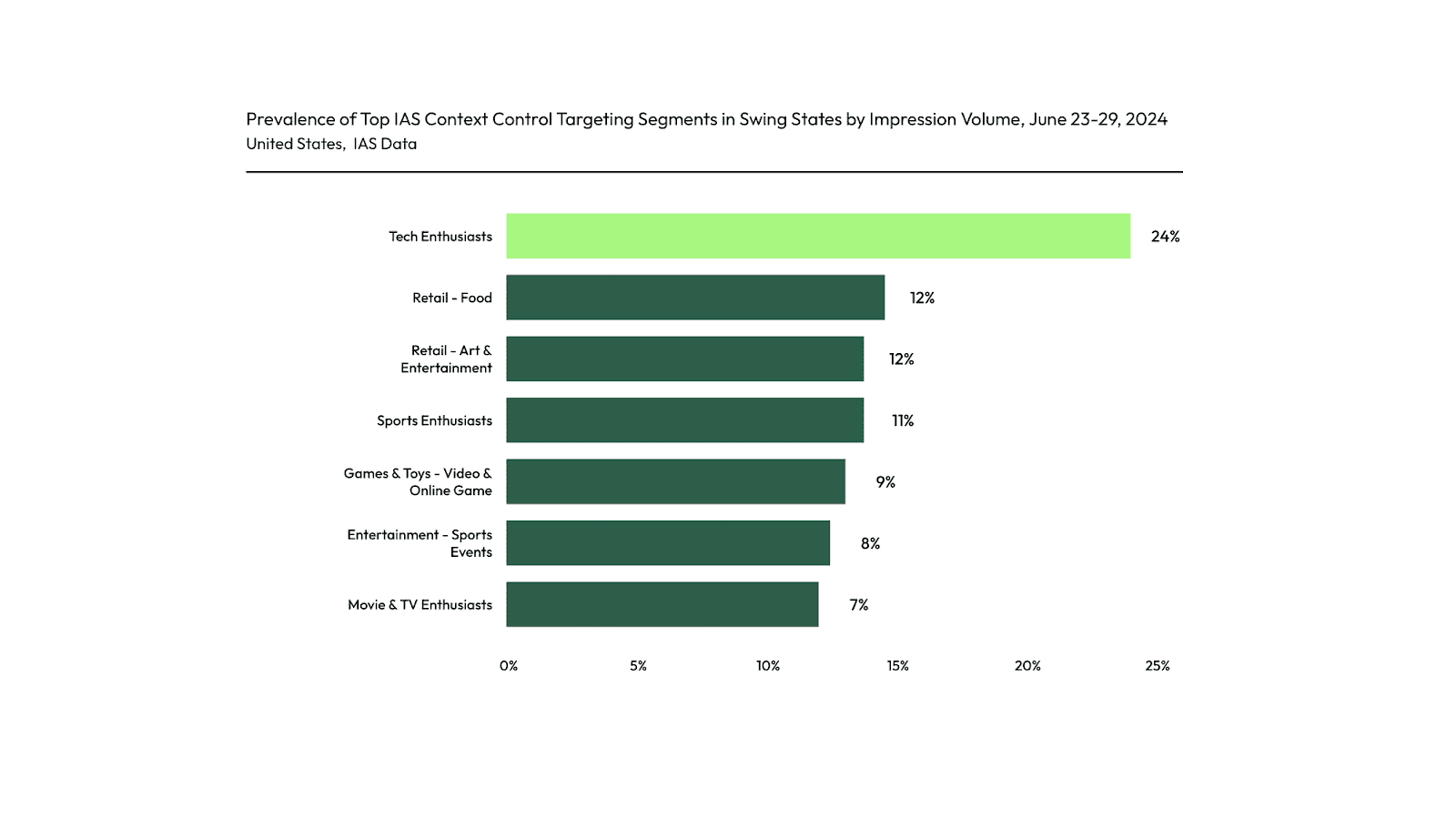
Capture viewer attention with high-quality contextual targeting segments
In the crowded media landscape during election season, simply reaching a large audience isn’t enough — capturing and holding their attention is key. High-volume segments can help extend reach, but to truly engage voters, especially in the upper funnel, it’s crucial to prioritize quality. High-quality media environments are more likely to foster meaningful interactions and leave a lasting impression, which is essential for building candidate awareness and sparking voter interest.
Attention in media has become a critical metric because it directly influences ad results. IAS Quality Attention leverages machine learning to evaluate how media visibility, ad environments, and consumer interactions impact campaign performance. By optimizing toward attention, advertisers can focus their media spend on the most effective placements — those that are most likely to engage audiences and drive desired actions. This approach not only enhances campaign performance but also boosts brand lift and sales lift, ensuring that political messaging resonates with voters in a meaningful way.
During the week of the presidential debate, the Election Lab identified the top contextual targeting segments in swing states that drove the highest attention scores. Leading the pack was content related to allergies and hay fever, boasting an average attention score of nearly 58 out of 100. Other high-attention segments included Columbus Day (57.6), Telco – Family Voice (57.3), and upcoming seasonal fashion trends like Winter Apparel (57.6) and Autumn Fashion (57.2).
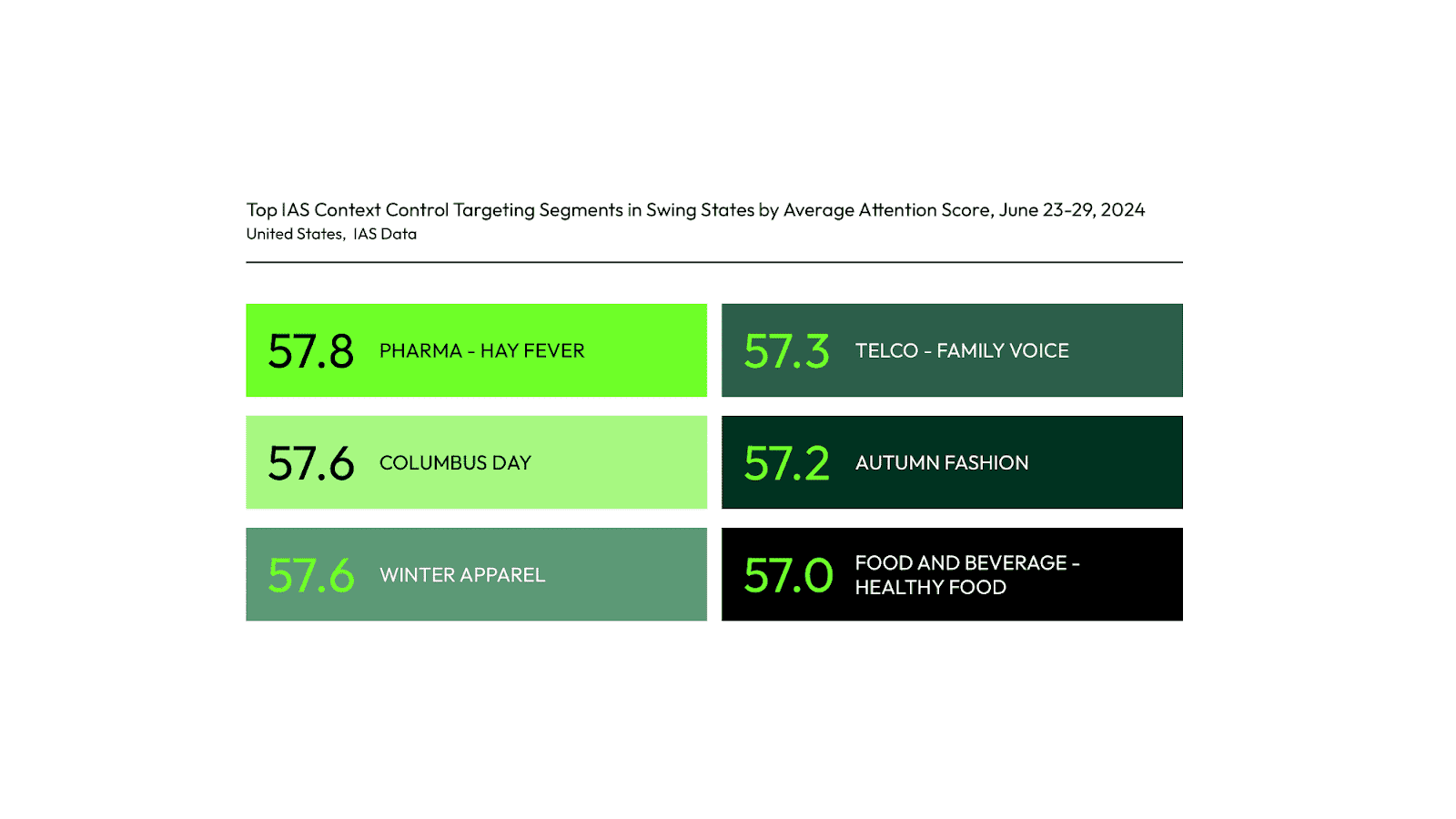
Leveraging segments like these to direct spend toward additional high-attention content will help political advertisers capture the eyes of attentive consumers where they are focused, and therefore likely to consider campaign messaging.
Maximize ROI with low-cost, high-impact targeting segments
Political advertising isn’t just about spreading the word — it’s about driving real-world results, like inspiring voters to volunteer, donate, or cast their ballots. To achieve these goals, it’s crucial to focus on the right contextual targeting segments.
So, which contextual targeting segments are most effective at turning voter engagement into action in swing states?
To answer this, we used IAS Total Visibility data to identify the top contextual targeting segments in swing states during the week of the presidential debate based on highest success rate — clicks and advertiser-defined conversions — and lowest cost per conversion (CPCV).
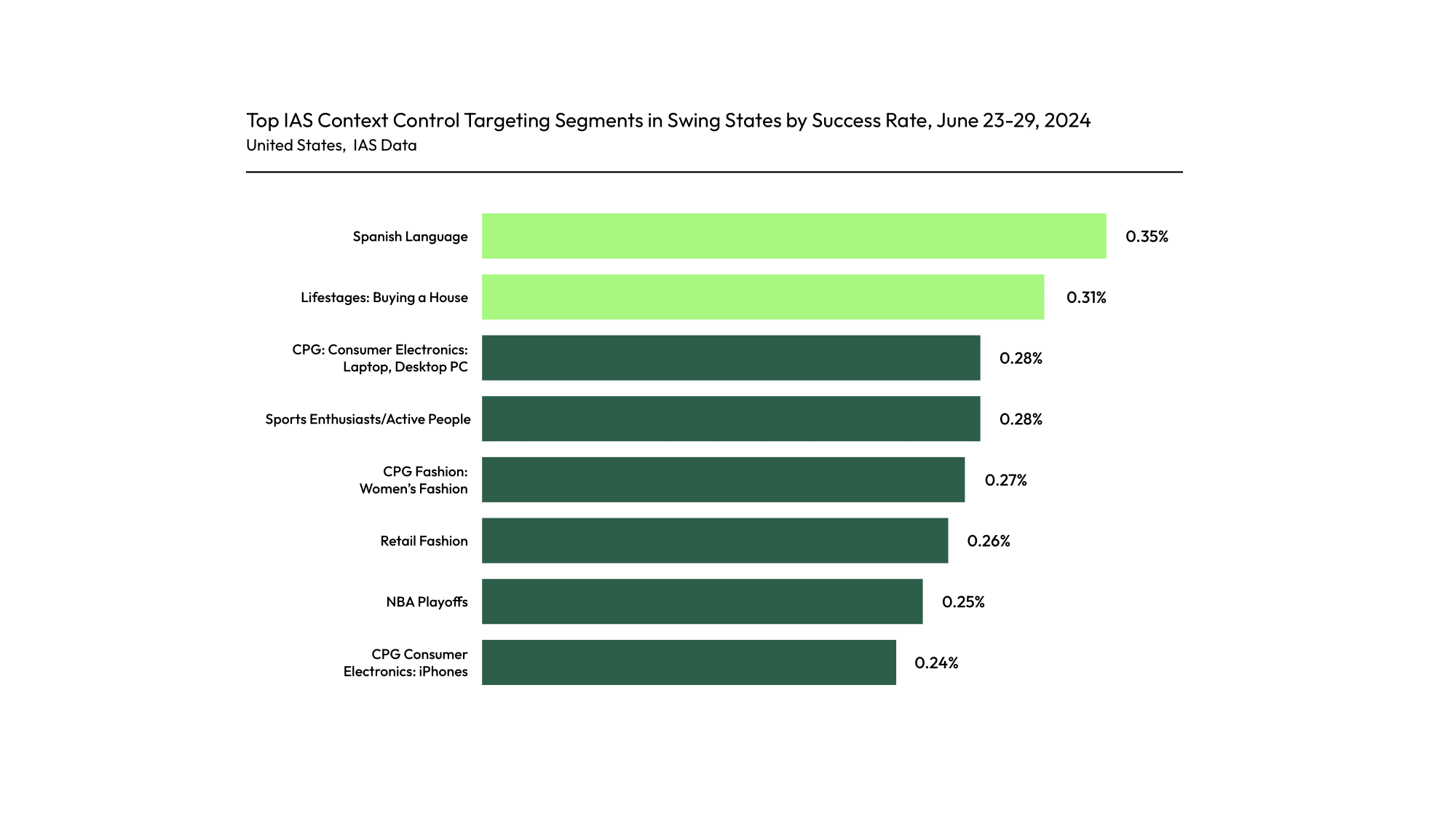
Spanish Language led the way with an impressive success rate of 0.35%, effectively directing impressions toward content in Spanish. Close behind was the Lifestages: Buying a House segment, achieving a 0.31% success rate. Other high-performing segments included CPG Consumer Electronics: Laptop, Desktop PC (0.28%), fashion-related categories including CPG Fashion: Women’s Fashion (0.27%) and Retail Fashion (0.26%), basketball-related segments such as NBA Playoffs (0.25%) and CPG Consumer Electronic: iPhone (0.24%).
For campaigns focused on maximizing conversions at the lowest cost, the segment related to Lifestages: Buying a Home offered the most competitive CPCV at just $1.89 per conversion. The CPG Consumer Electronics: Laptop, Desktop PC segment followed closely at $2.60 per conversion. Both segments also delivered some of the highest conversion rates in swing states.
Common themes across top-performing segments included consumer electronics and family-oriented content, emphasizing the resonance of these topics in swing states. Segments like Software Developers and Consumer Electronics Show clustered at $3.75-$3.88 per conversion, while Financial Personal Family Investments and Society: Starting a Family ranked at $4.26 and $4.38 per conversion, respectively.
A strategic approach to political advertising
Targeting segments with high success rates and low costs-per-conversion can help political advertisers funnel potential voters toward conversion, while high-volume or high-attention segments can drive upper-funnel awareness and consideration. By enabling IAS Context Control Targeting, political campaigns can ensure their candidates and messages reach the right audiences and make a meaningful impact.
Additionally, IAS Quality Attention is an effective tool for political advertisers to leverage to identify placements with higher attention levels.
How IAS can help
Political advertisers can take further control of tailoring ad content that meets unique campaign goals with IAS’s Context Control Targeting. Context Control Targeting segments help political advertisers control where their candidate or issue is seen, which can be especially crucial when reaching voters in swing states. These targeting segments protect brand safety while opening up scale so you can continue to drive superior results throughout an election year and beyond.
With IAS’s Context Control Targeting, advertisers can leverage key benefits including:
- Page-level classification to curate content for actionable campaigns
- 370+ industry vertical, topical, seasonal, and audience proxy contextual segments for targeting within major DSPs
- Proprietary cognitive semantic technology which leverages Natural Language Processing and the industry’s largest knowledge graph to enable deeper classification of content at scale
- Easy activation in all major DSPs
- Cookie-free and privacy-safe targeting using emotion and sentiment-based efficiencies
- Scaled content adjacency to drive optimized results
- Personalized recommendations for selecting the best targeting segments for your campaigns
For a step-by-step guide to scaling your brand in an election year, download your copy of the IAS Political Guide, and explore our Election Lab for more insights.
Methodology
The Election Lab sampled data from the United States swing states (Arizona, Georgia, Michigan, Nevada, North Carolina, Pennsylvania, Wisconsin) from June 23-29, 2024, the week of the presidential debate. This included several separate analyses outlined below:
We sampled over 25 million impressions to compute the percentage of content in U.S. swing states during that time that were categorized as a) political versus non-political content and b) negative versus positive political content based on our Context Control Avoidance Segments.
To identify the top contextual segments by volume, we sampled over 6.5 million impressions to compute the number of impressions that were categorized for all of our off-the-shelf Context Control Targeting Segments and reported the seven with the highest volume in swing states during the target date range. To quantify the number of impressions and users unlocked when targeting the Tech Enthusiast segment, we used the Xandr DSP inventory forecasting projections for activating this segment in swing states for all of Q3 2024.
We used a similar approach to identify the top contextual segments by attention, conversion rate, and cost-per-conversion with the caveat that these segments sampled data from impressions served by clients who implement our Quality Attention (~4 million i impressions sampled) and Total Visibility ~11.7 million impressions sampled) products respectively.
 Share on LinkedIn
Share on LinkedIn Share on X
Share on X